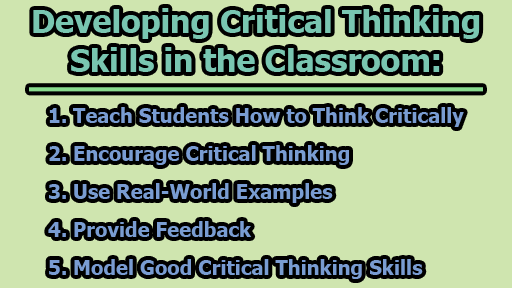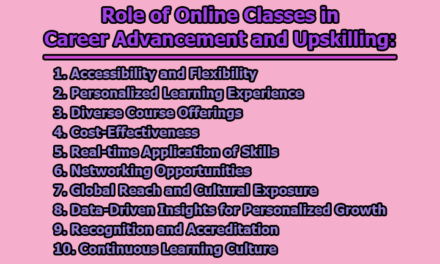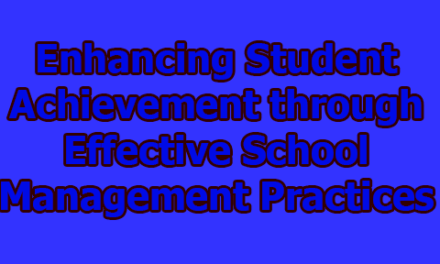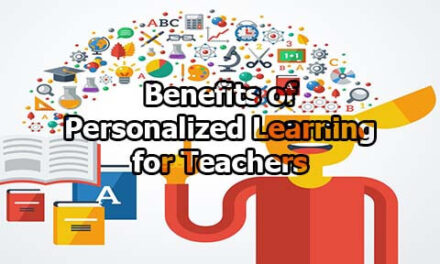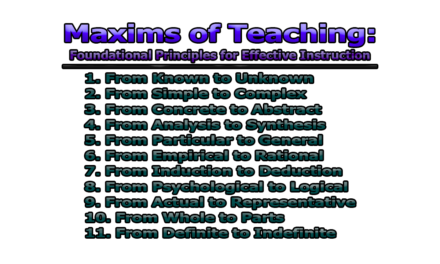Developing Critical Thinking Skills in the Classroom:
In today’s rapidly changing world, critical thinking skills have become essential for success in education, the workplace, and everyday life. Critical thinking goes beyond memorization and rote learning; it involves the ability to analyze, evaluate, and synthesize information to make informed decisions and solve complex problems. As educators, it is our responsibility to foster these skills in our students. In this article, we will explore five effective strategies for developing critical thinking skills in the classroom.
1. Teach Students How to Think Critically: Before students can become proficient critical thinkers, they need to understand what critical thinking is and how to apply it. Begin by introducing the concept of critical thinking and its importance in various aspects of life. Here are some steps to get started:
a) Define Critical Thinking: Explain to your students that critical thinking involves the active and systematic process of analyzing information, evaluating arguments, and making reasoned judgments. Emphasize that it is a skill that can be developed and improved over time.
b) Break Down the Process: Break the critical thinking process into manageable steps, such as:
- Identifying the problem or question.
- Gathering relevant information and evidence.
- Analyzing and evaluating information and arguments.
- Formulating well-reasoned conclusions or solutions.
- Communicating findings effectively.
c) Provide Examples: Offer concrete examples of critical thinking in action. Show how critical thinking can be applied to everyday situations, academic subjects, and real-world challenges. Encourage students to see the relevance of critical thinking in their lives.
d) Use Critical Thinking Tools: Introduce students to various critical thinking tools, such as mind maps, Socratic questioning, and argument analysis. Encourage them to use these tools to organize their thoughts and engage with complex ideas.
e) Practice Critical Thinking Exercises: Incorporate critical thinking exercises and puzzles into your curriculum. These activities can help students develop their problem-solving skills and logical reasoning.
2. Encourage Critical Thinking: Once students have a basic understanding of critical thinking, it’s essential to create an environment that fosters its development. Here’s how you can encourage critical thinking in your classroom:
a) Foster a Growth Mindset: Promote the idea that intelligence and critical thinking skills can be developed with effort and practice. Encourage a growth mindset where mistakes are seen as opportunities for learning.
b) Ask Open-Ended Questions: Instead of asking yes-or-no questions, use open-ended questions that require students to think deeply and provide reasoned responses. Encourage discussion and debate.
c) Encourage Diverse Perspectives: Create a classroom culture that values diversity of thought. Encourage students to consider different viewpoints and challenge their assumptions.
d) Promote Metacognition: Teach students to reflect on their thinking processes. Ask them to explain how they arrived at a particular conclusion and whether they could have reached a different one with different information or reasoning.
e) Collaborative Learning: Encourage collaborative learning experiences where students can engage in group discussions, peer review, and cooperative problem-solving. Collaboration can help students see different approaches to critical thinking.
3. Use Real-World Examples: One of the most effective ways to develop critical thinking skills is by connecting classroom learning to real-world applications. When students see how critical thinking is relevant to their lives, they are more motivated to develop and apply these skills. Here’s how you can use real-world examples to enhance critical thinking:
a) Case Studies: Incorporate case studies from various fields that require students to analyze complex situations, consider multiple perspectives, and propose solutions. Case studies immerse students in real-world challenges and help them apply critical thinking in context.
b) Current Events: Discuss current events and issues that are relevant to your subject matter. Encourage students to critically analyze news articles, opinion pieces, and data to form their own informed opinions.
c) Guest Speakers and Experts: Invite guest speakers or subject matter experts to share their experiences and insights with students. Hearing from professionals in the field can provide real-world context and inspire critical thinking.
d) Experiential Learning: Organize field trips, simulations, or hands-on activities that require students to apply critical thinking skills. For example, a science class could visit a laboratory to conduct experiments and analyze results.
e) Project-Based Learning: Assign projects that mirror real-world challenges. Encourage students to research, plan, and execute projects that require critical thinking and problem-solving.
4. Provide Feedback: Feedback is a crucial component of developing critical thinking skills. It helps students understand their strengths and areas for improvement. Here are some tips for providing effective feedback:
a) Specific and Constructive: Make feedback specific and constructive. Highlight what students did well and provide guidance on how they can improve. Avoid generic comments like “good job” or “needs work.”
b) Focus on Process, Not Just Results: Instead of solely evaluating the final answer or product, assess the student’s thinking process. Ask questions like, “How did you arrive at this conclusion?” or “Can you explain your reasoning?”
c) Encourage Revision: Allow students to revise their work based on feedback. This reinforces the idea that critical thinking is an ongoing process of refinement.
d) Peer Feedback: Incorporate peer review and self-assessment into your classroom. Encourage students to evaluate their peers’ work using clear criteria, which can enhance their own critical thinking skills.
e) Socratic Dialogue: Engage in Socratic dialogues with your students, where you ask probing questions to encourage deeper thinking. This method promotes critical reflection and thoughtful responses.
5. Model Good Critical Thinking Skills: As an educator, you play a pivotal role in modeling good critical thinking skills for your students. Your actions and attitudes set an example for them to follow. Here’s how you can model critical thinking in the classroom:
a) Think Aloud: When discussing a complex topic or problem, think aloud as you work through it. Share your thought processes, questions, and reasoning with students. This helps them see how a skilled thinker approaches challenges.
b) Embrace Uncertainty: It’s okay to admit when you don’t have all the answers. Encourage students to explore uncertainties, ask questions, and seek information to arrive at informed conclusions.
c) Encourage Questions: Create a classroom culture where questions are welcomed and encouraged. Answer questions thoughtfully and promote further inquiry.
d) Discuss Mistakes: Share stories of your own mistakes and what you learned from them. Encourage students to view mistakes as opportunities for growth and learning.
e) Use Critical Thinking Language: Incorporate critical thinking vocabulary into your discussions and assignments. Use terms like “evidence,” “analysis,” “evaluation,” and “argument” to reinforce critical thinking concepts.
In conclusion, developing critical thinking skills in the classroom is a vital endeavor that prepares students for success in both their academic and professional lives. By following these strategies, educators can create an environment that nurtures critical thinking, empowers students to think independently, and equips them with the skills they need to face the challenges of the modern world. Teaching students how to think critically, encouraging critical thinking, using real-world examples, providing constructive feedback, and modeling good critical thinking skills are essential steps toward achieving this goal. Ultimately, fostering critical thinking is an investment in the future success and adaptability of our students.
References:
- Abrami, P. C., Bernard, R. M., Borokhovski, E., Wade, A., Surkes, M. A., Tamim, R., & Zhang, D. (2008). Instructional interventions affecting critical thinking skills and dispositions: A stage 1 meta-analysis. Review of Educational Research, 78(4), 1102-1134.
- Bailin, S., Case, R., Coombs, J. R., & Daniels, L. B. (1999). Conceptualizing critical thinking. Journal of Curriculum Studies, 31(3), 285-302.
- Brookfield, S. D. (2012). Teaching for critical thinking: Tools and techniques to help students question their assumptions. Jossey-Bass.
- Brookhart, S. M. (2017). How to assess higher-order thinking skills in your classroom. ASCD.
- Dweck, C. S. (2006). Mindset: The new psychology of success. Random House.
- Elder, L., & Paul, R. (2006). Critical thinking: The nature of critical and creative thought. Journal of Developmental Education, 30(2), 34-35.
- Ennis, R. H. (1987). A taxonomy of critical thinking dispositions and abilities. In J. Baron & R. J. Sternberg (Eds.), Teaching thinking skills: Theory and practice (pp. 9-26). W. H. Freeman.
- Facione, P. A. (2015). Critical thinking: What it is and why it counts. Insight Assessment.
- Gross, M., & Shapiro, J. (2016). Educating for critical thinking: Thinking the road ahead. In J. Walsh & C. S. M. Costley (Eds.), Critical thinking in clinical assessment and diagnosis (pp. 1-11). Palgrave Macmillan.
- Halpern, D. F. (2014). Thought and knowledge: An introduction to critical thinking. Psychology Press.
- Hattie, J., & Timperley, H. (2007). The power of feedback. Review of Educational Research, 77(1), 81-112.
- Herreid, C. F. (2007). Start with a story: The case study method of teaching college science. NSTA Press.
- Johnson, D. W., & Johnson, R. T. (2009). An educational psychology success story: Social interdependence theory and cooperative learning. Educational Researcher, 38(5), 365-379.
- Kolb, D. A. (1984). Experiential learning: Experience as the source of learning and development. Prentice-Hall.
- Kuh, G. D. (2008). High-impact educational practices: What they are, who has access to them, and why they matter. Association of American Colleges and Universities.
- Lipman, M. (2003). Thinking in education (2nd ed.). Cambridge University Press.
- Paul, R. (1992). Critical thinking: What, why, and how. New Directions for Community Colleges, 77, 3-24.
- Paul, R., & Elder, L. (2009). Critical thinking: The nature of critical and creative thought. Journal of Developmental Education, 30(2), 34-35.
- Perkins, D. N., & Ritchhart, R. (2004). When is a story, not a story? Dispositions, constructivism, and the nature of stories. Educational Researcher, 33(9), 14-24.
- Scriven, M., & Paul, R. (2007). Defining critical thinking. Retrieved from https://www.criticalthinking.org/pages/defining-critical-thinking/766
- Thomas, J. W. (2000). A review of research on project-based learning. Autodesk Foundation.
- Topping, K. J. (1998). Peer assessment between students in colleges and universities. Review of Educational Research, 68(3), 249-276.
- Wiggins, G. (2012). Seven keys to effective feedback. Educational Leadership, 70(1), 10-16.

Assistant Teacher at Zinzira Pir Mohammad Pilot School and College

